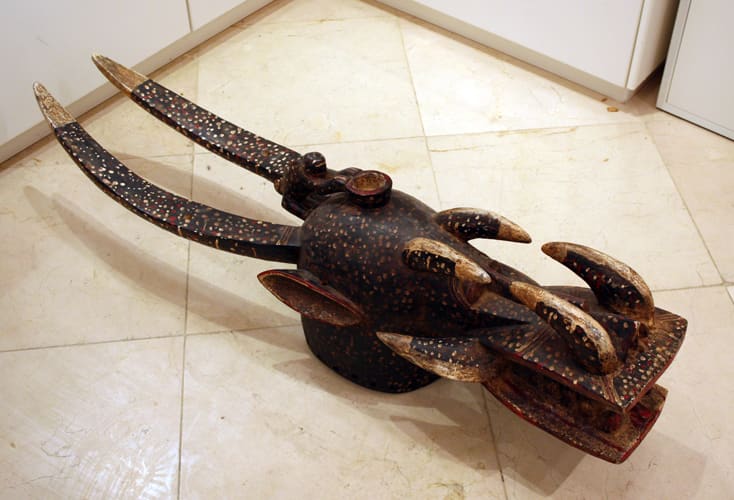Senufo Painted Firespitter Mask, 20th Century CE
Wood
43.5
PF.6158
The threatening appearance of this mask, combining various features of animals, relates to its purpose. Long, arching antelope horns; fierce, sharp fangs; and a variety of smaller tusks and horns...
The threatening appearance of this mask, combining various features of animals, relates to its purpose. Long, arching antelope horns; fierce, sharp fangs; and a variety of smaller tusks and horns are meant to frighten away evil, for this mask battled the forces of malevolent spirits that haunt the world of the living. The long snout further recalls the mouth of an alligator or hyena. The mask derives its power from magical and medicinal substances that would have been placed inside the small dish held atop of the mask by a stylized chameleon. However, the power of this mask could not be fully effectual until it was worn and danced. The identity of the masquerader would have been further concealed by a cloth costume attached to the holes at the base of the helmet mask. Such masks are sometimes known as “firespitters” after the belief that hot coals were contained inside the mouth and spewed forth by the dancer, a frightening effect that underscores the forceful nature of such masks. Due to the dangerous powers such masks embody, they are often kept away from the village in sacred groves or isolated shelters in the bush relating to the Poro society. The Poro society, a secret group of males in charge with initiating young men into the ways of life and governance, uses a variety of mask, of which this is but one. This mask, painted with a series of colorful speckles, would have elegantly conveyed the forces of evil that are inherent within the universe. Furthermore, this mask would have given the young initiates into the Poro society a weapon with which they could battle evil and restore peace and clam to the village.



